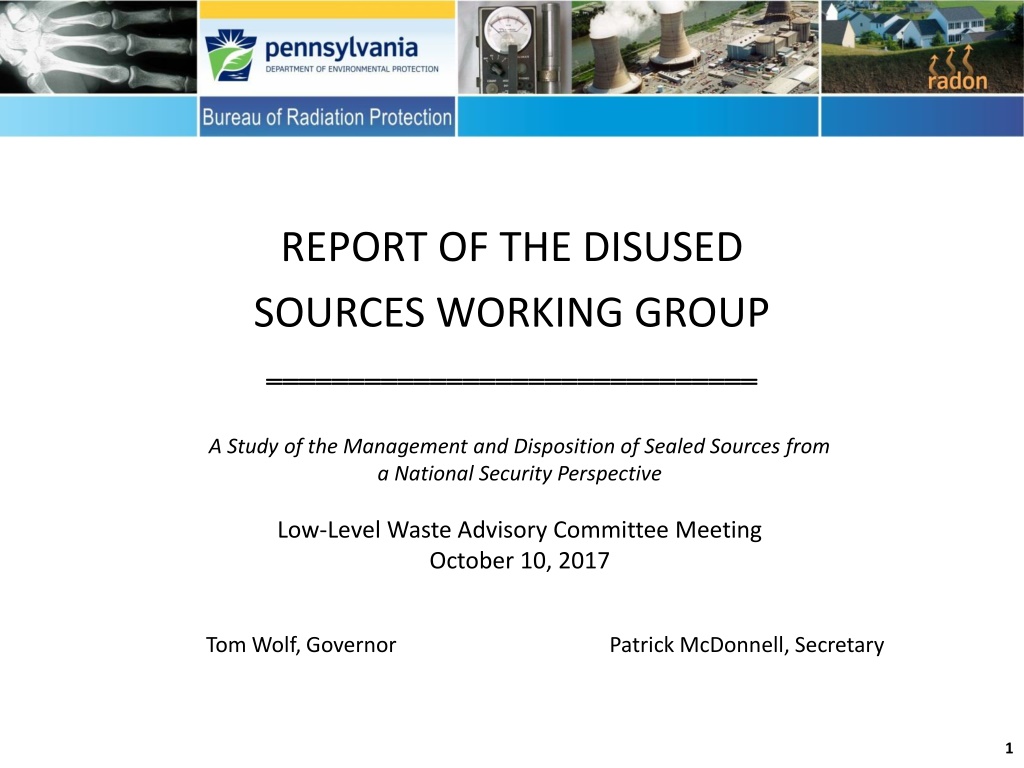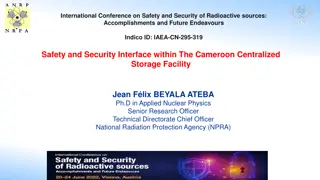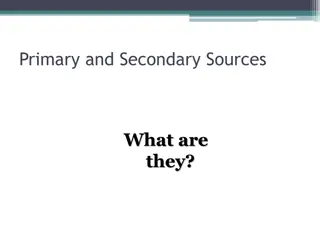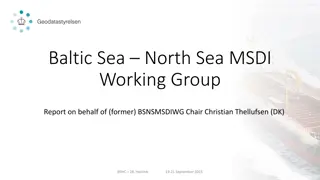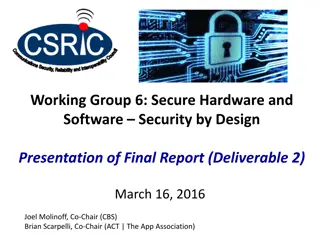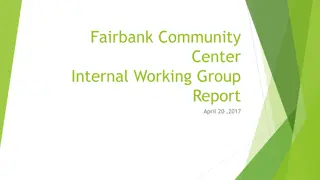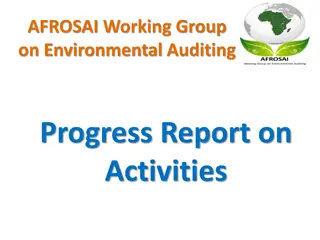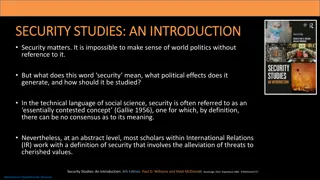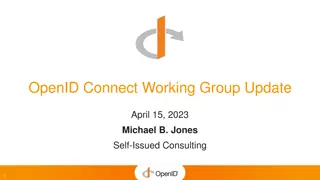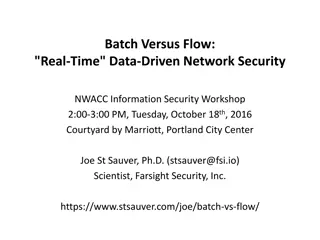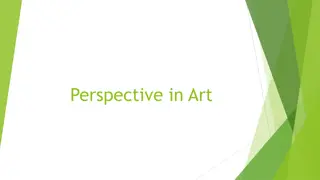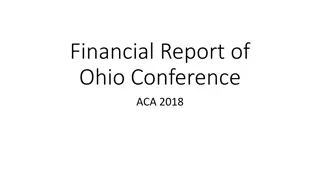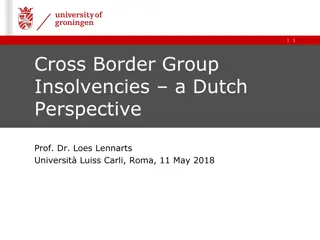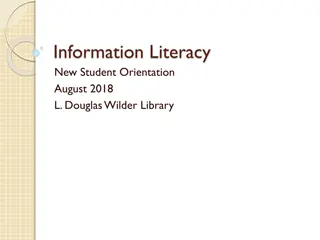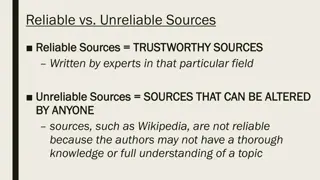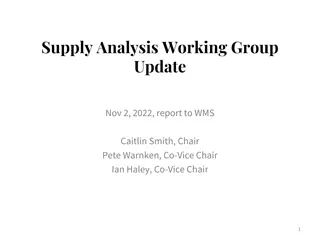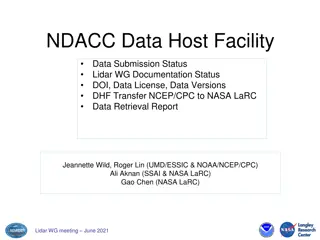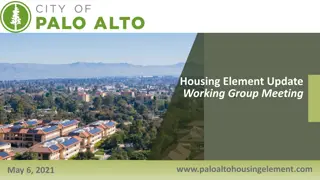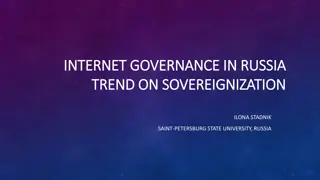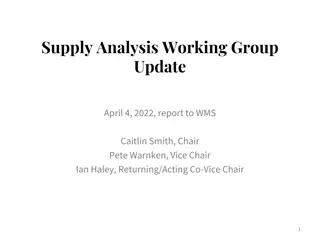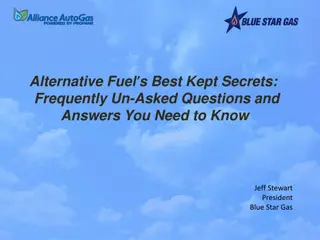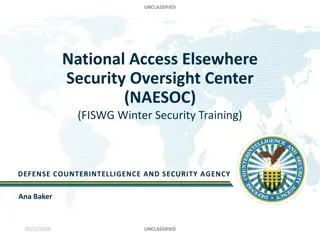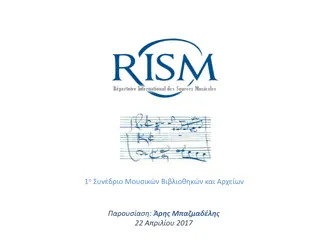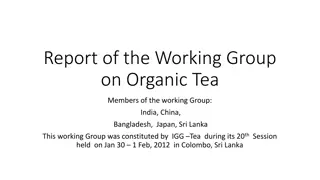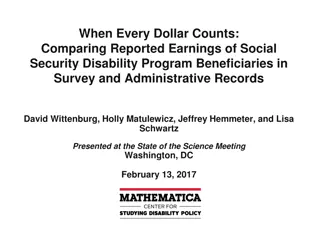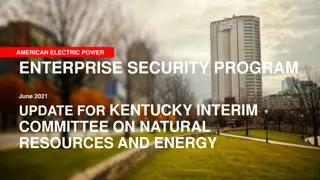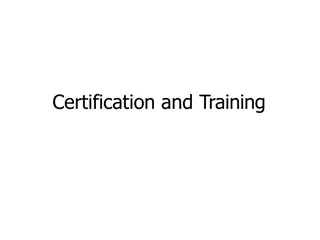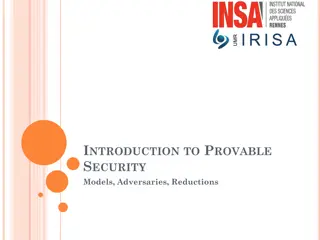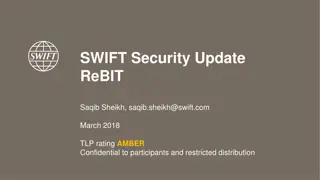Disused Sources Working Group Report on National Security Perspective
The Disused Sources Working Group (DSWG) report focuses on managing and disposing of sealed sources to reduce national security risks. Formed in 2011, DSWG developed recommendations to enhance the management of disused sealed sources. The report categorizes sealed sources based on potential harm and outlines specific thresholds for different categories. It emphasizes the importance of safe handling and secure protection of radioactive materials. The study is limited to commercial and federal sources under state and compact responsibility, excluding DOE-controlled sources.
Download Presentation

Please find below an Image/Link to download the presentation.
The content on the website is provided AS IS for your information and personal use only. It may not be sold, licensed, or shared on other websites without obtaining consent from the author. Download presentation by click this link. If you encounter any issues during the download, it is possible that the publisher has removed the file from their server.
E N D
Presentation Transcript
REPORT OF THE DISUSED SOURCES WORKING GROUP A Study of the Management and Disposition of Sealed Sources from a National Security Perspective Low-Level Waste Advisory Committee Meeting October 10, 2017 Tom Wolf, Governor Patrick McDonnell, Secretary 1
LLW Forum Report on Disused Sealed Sources Background 1 Low-Level Radioactive Waste, Inc. (LLW Forum) is a national association of states, compacts, federal agencies and industry representatives. National Nuclear Security Administration (NNSA) requested the LLW Forum establish a working group to provide recommendations to reduce the national security risk from disused sources. LLW Forum Disused Sources Working Group (DSWG) was formed in September 2011 to develop recommendations for improving the management of disused sealed sources that pose a threat to national security. DSWG final report was published in March 2014 and it is posted on the LLW Forum Website at www.llwforum.org. DSWG received a follow-on NNSA grant to facilitate implementation of report recommendations. 2
LLW Forum DSWG Report Background 2 Sealed Radioactive Source - A radioactive material that is specifically manufactured for the purpose of using the emitted radiation. Sealed sources usually consist of a known quantity of radioactive material where the structure is designed to prevent, under normal use, any dispersion of radioactive substance. Disused Source - A radioactive source that is no longer used, and is not intended to be used, for the practice for which an authorization has been granted. Individual sealed sources are ranked from highest potential (Category 1) to lowest potential (Category 5) according to their relative potential to cause immediate harmful health effects if not safely managed or securely protected. 3
Examples of Radioactive Sealed Sources http://www.imagesco.com/geiger/S-7Source%20Product%20Line-Bw.jpg 4
LLW Forum DSWG Report Categories of Sealed Sources: Category 1: greater than or equal to Category 1 threshold (e.g., for Co-60: 810 Ci) irradiators, teletherapy machines. Category 2: less than the Category 1 threshold but equal to or greater than the Category 2 threshold - 1/100th of Category 1 (e.g., for Co-60: 8.1 Ci) industrial gamma radiography equipment, well logging gauges. Category 3: less than the Category 2 threshold but equal to or greater than the Category 3 threshold - 1/10th of Category 2 (e.g., for Co-60: 0.81 Ci) industrial gauges Category 4: less than the Category 3 threshold but equal or greater than the Category 4 threshold -1/100th of Category 3 (e.g., for Co-60: 0.0081 Ci) thickness gauges, bone densitometers. Category 5: less than the Category 4 threshold down to IAEA exempt quantities x-ray fluorescence devices, static eliminators. 5
LLW Forum DSWG Report Scope of Study Limited to commercial sources and federal sources for which states and compacts are responsible. Excludes sealed sources that are under Department of Energy s (DOE) control and responsibility. Excludes sources that present a low security concern, such as tritium exit signs. Physical security of sealed sources is outside the scope of the study. 6
LLW Forum DSWG Report Problem Statement There are approximately 2 million sealed sources that are licensed for use in the U.S. and, of those, thousands become disused sources each year. Users are reluctant to declare their sources as disused or reuse, recycle, or dispose of their sources for a variety of reasons such as future use, transportation restrictions, disposal cost and the relative ease and low cost of storage. Some of these sources pose a threat to national security as they could be used as a radiological dispersion device (RDD). EPA has estimated that an RDD incident in a metropolitan area could result in about 39 million cubic feet of radioactive waste requiring disposal. No comprehensive data system exists to track all sealed sources or disused sources in the United States. NRC s National Source Tracking System (NSTS) includes only Category 1 and 2 sources and not Category 3 thru 5 sources. 7
LLW Forum DSWG report Major Factors Contributing to the Disused Sealed Sources Problem The life cycle costs of managing and ultimately disposing of sealed sources are not internalized. The practices of the NRC and the NNSA do not fully reflect a consistent review of what sources pose a threat to national security. The regulatory system is not adequate for the post-9/11 threat environment. There are no financial incentives for disused sources to be used, recycled, or disposed in a timely manner. The opportunities for recycling and reusing sealed sources are being underutilized. Type B shipping containers needed to transport certain high-activity sealed sources are in short supply and are very expensive. 8
Recommendations Recommendations 1. NRC should develop robust financial assurance requirements for all licensees (Categories 1 thru 3). The financial assurance requirements should be adequate to cover the entire cost of packaging, transport and disposal. 2. Create a program, possibly through the Conference of Radiation Control Program Directors, Inc. (CRCPD), to educate proposed buyers of sealed sources about the life-cycle costs of sealed sources, including information about the cost of storage, transportation and disposal. 3. NRC and the Agreement States (AS) should expand and make enforceable the general license (GL) storage limit regulation to address all Category 1 thru 3 sources in storage for more than two years unless the licensee can make a clear demonstration of future use. Clear regulatory authority is needed to direct the disposition of these sources after they have been stored for two years. 9
Recommendations 4. NRC should amend its regulations to require Specific License (SL) for all Category 3 sources. 5. NRC and AS should incorporate procedures in their inspection programs to review the status of Category 1 thru 3 sources in storage including consideration of the length of, reason for, and location of storage. 6. NNSA should identify several foreign package designs for Type B shipping containers that would have widespread applicability to a number of disused sources in the U.S. and submit applications to have these packages certified by the NRC for domestic use. 10
Recommendations 7. A secure source exchange program should be created and administered via an intermediary (possibly EPA) to work with licensees, source and device manufacturers, and recyclers to provide them with information about sources still having a useful life, with the goal of increasing beneficial reuse and recycling opportunities. 8. A detailed study should be conducted possibly by the EPA due to their long history of working with reuse and recycling of resources to identify measures to promote opportunities for the reuse and recycling of sources. 9. NRC and AS should enhance the NSTS to include as a required field the date last used of all sealed sources. These data should be validated during routine inspections. 11
Recommendations 10. NRC and AS should require manufacturers and suppliers to dispose of those sources that have no recycling or reuse value on an annual basis. 11. Federal research agencies should encourage grantors to give preference to applicants proposing to use sealed sources from their existing inventories or alternative technologies, and require applicants to budget for the full life-cycle cost of use and disposition in grant applications. 12
Implementation Phase DSWG Key Activities Provided presentations at various meetings and conferences to promote its findings and recommendations, as well as gather additional feedback and input. Partnered with the CRCPD E-34 Committee to distribute, collect and analyze responses to a survey of state regulators. Provided extensive input and comment to NRC on its byproduct material financial scoping study in support of a rulemaking to require financial assurance for the disposition of Category 1 and 2 sealed sources. Published educational brochure for prospective and current licensees including a generic version for states to input their own logo and contact information. Prepared two companion documents to the educational brochures providing information about compact import and export authorities including TENORM waste. 13
Implementation Phase DSWG Activities contd Continue to work with stakeholders to identify areas of agreement and encourage implementation of associated recommendations to improve the existing system. Continue to work with the CRCPD s Part S Working Group on the development of suggested state regulations related to financial assurance for radioactive sources and devices. Develop regional workshops on the proper management and disposition of radioactive sources and devices in coordination with the ten operating LLRW compact commissions. DSWG Website: http://www.disusedsources.org/resources 14
Thank you. Questions? Rich Janati Chief, Division of Nuclear Safety Administrator, Appalachian Compact Comm. Phone: 717-787-2163 rjanati@pa.gov 15
